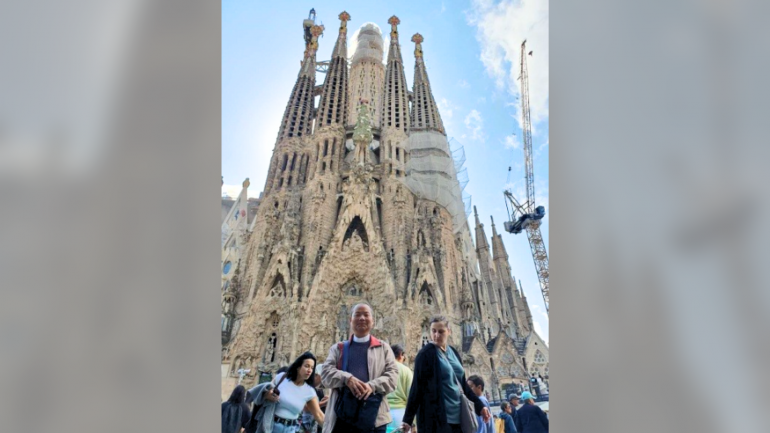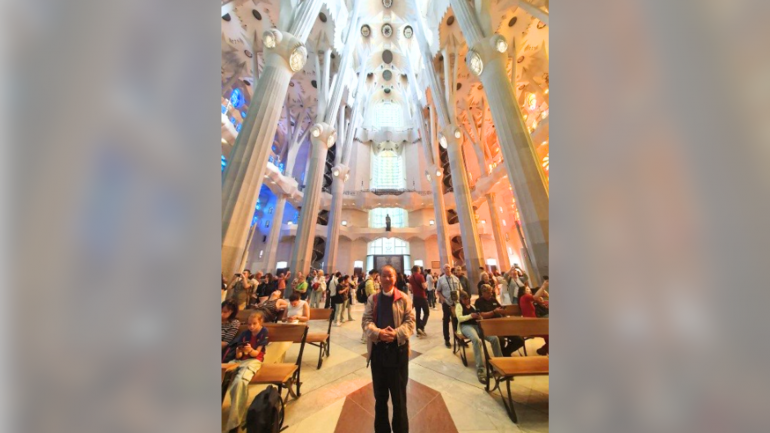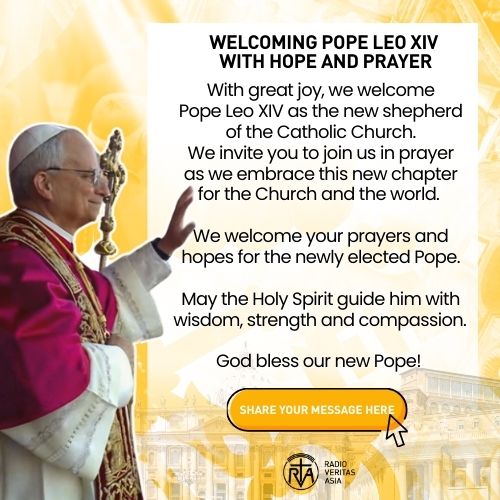Finding God’s Beauty in the Sagrada Família

After completing my studies at the Pontifical Urban University, I planned to use my vacation to fulfill a long-held dream of pilgrimage in Europe. Attending an academic conference in Lisbon gave me the chance to visit Fátima, and later Ávila, to honor St. Teresa of Ávila and St. John of the Cross, both of whom shaped my spiritual journey. Yet the most unexpected and memorable pilgrimage was to the Sagrada Família in Barcelona, a place I had only dreamed of visiting.
While on a bus to Zaragoza, I was chatting with a fellow priest who mentioned that Barcelona was quite close, less than two hours away by car. My immediate thought was: I must visit the Sagrada Família! I had read countless descriptions of its beauty and had long dreamed of seeing this majestic architectural wonder in person.
After arriving in Zaragoza, I shared my wish honestly with the local host, Fr. Luke. At first, he hesitated; after all, a round trip would take nearly six hours, meaning he would drive from dawn until after dark. It was a demanding journey. But moved by my sincere request, he agreed. He understood what the Sagrada Família meant to a priest like me, who had come from the distant East; this might be my only chance in a lifetime. It would be like a priest visiting Rome and not seeing St. Peter’s Basilica!
And so, at dawn on September 27, accompanied by the kind-hearted Fr. Luke, we drove for about three hours on the highway and arrived in Barcelona, Spain’s second-largest city. I am convinced that this was God’s arrangement, granting me the opportunity to fulfill a dream during my time in Europe.
The Sagrada Família is a church surrounded by stories and wonder. Although it is a Roman Catholic basilica, it was not funded by the Vatican or the government. Instead, it has been built entirely through public donations and visitor ticket sales. Located in the culturally distinct region of Catalonia, construction began in 1882 and, more than 140 years later, remains unfinished. Even so, it has already been declared a UNESCO World Heritage Site.
The church was designed by Spain’s world-renowned architect Antoni Gaudí (1852–1926), who devoted nearly 40 years, almost his entire life, to it. In 2010, Pope Benedict XVI consecrated it as a minor basilica. With its extraordinary design, intricate details, and harmony with nature, the Sagrada Família challenges traditional ideas of what a church should look like. As I walked through it in silent awe, two words kept echoing in my heart: so beautiful!

The exterior is breathtaking, grand and full of meaning, like a massive stone Bible. It has three main facades, each telling a part of Jesus’ story:
-
Nativity Facade: The only one completed under Gaudí’s direct supervision, it overflows with life and joy, depicting the birth of Jesus. Covered with carvings of plants, animals, and angels, it reflects Gaudí’s belief that nature is God’s masterpiece.
-
Passion Facade: In sharp contrast, this side has bold, angular figures that convey the pain and sacrifice of Christ’s crucifixion. Its stark design invites deep reflection on suffering and redemption.
-
Glory Facade: Still under construction, it will be the largest and most majestic, symbolizing the glory of God.
When completed, the church will have eighteen towers, representing Jesus, the Virgin Mary, the four Evangelists, and the twelve Apostles, making it one of the tallest and most distinctive landmarks in Barcelona.
Stepping inside felt like entering a forest made of light and stone. The tall columns rise and branch out like trees, supporting a high ceiling that seems to open toward heaven. There are almost no straight lines or flat surfaces, everything curves and flows naturally, just as it does in nature.
The stained-glass windows are another marvel. Sunlight streams through in shades of red, yellow, blue, and green, filling the space with a sacred glow. The eastern windows are cool blue and green, reflecting the freshness of morning light; the western windows glow with warm oranges and yellows, like the evening sun. This play of color and light gives the church a sense of life, as if it breathes with the rhythm of day and night.
Gaudí’s genius lay in his ability to unite faith, nature, and beauty. He believed that human creations should never rise higher than God’s. For this reason, he designed the tallest tower to be just slightly shorter than Montjuïc Hill, the highest point in Barcelona. His design expresses a deep reverence for creation and a desire for harmony between heaven and earth.
Construction has continued for over a century and is expected to be completed in 2026, marking the 100th anniversary of Gaudí’s death. Blending elements of Gothic and Art Nouveau styles, the Sagrada Família is not merely a building, it is a living work of art. As one art critic once said, “There is nothing like it in the entire history of architecture.”
When we visited, the church was filled with tourists and pilgrims from around the world. Although it is one of the few churches in Europe that charges an entrance fee, people gladly pay, knowing that every ticket helps fund its completion. Sadly, I had only an hour to explore, leaving little time for quiet prayer inside.
That night, we drove back to Zaragoza under the glow of city lights. We stopped twice to rest along the way, and Fr. Luke was clearly exhausted. To lift his spirits, I said from my heart:
“Father, bringing us to the Sagrada Família today is truly a meritorious act! It’s the most meaningful good deed you’ve done in this Jubilee Year. May God bless you.”
A joyful, contented smile appeared on Fr. Luke’s tired face.
(This article was originally published in Faith Press)








